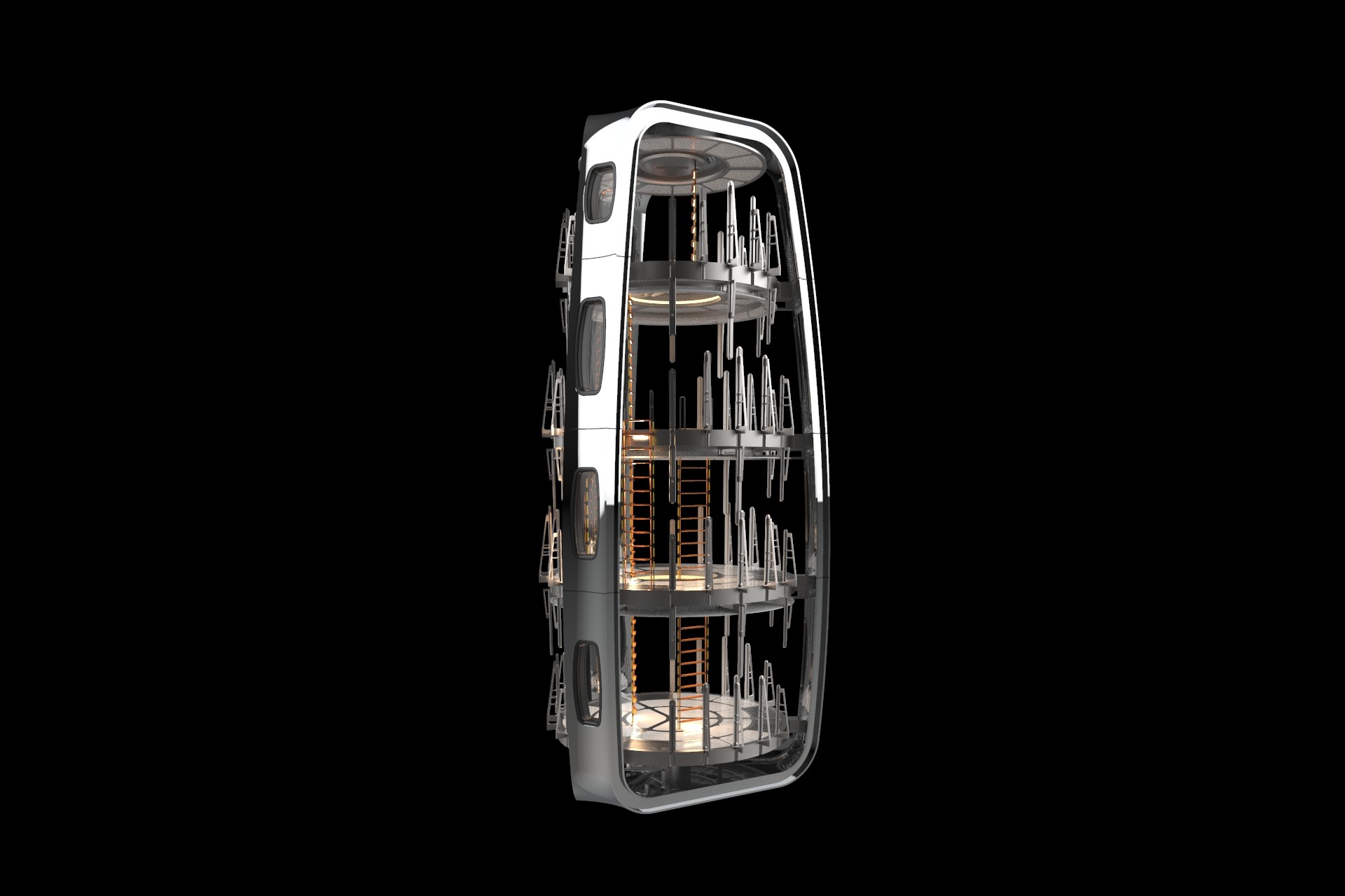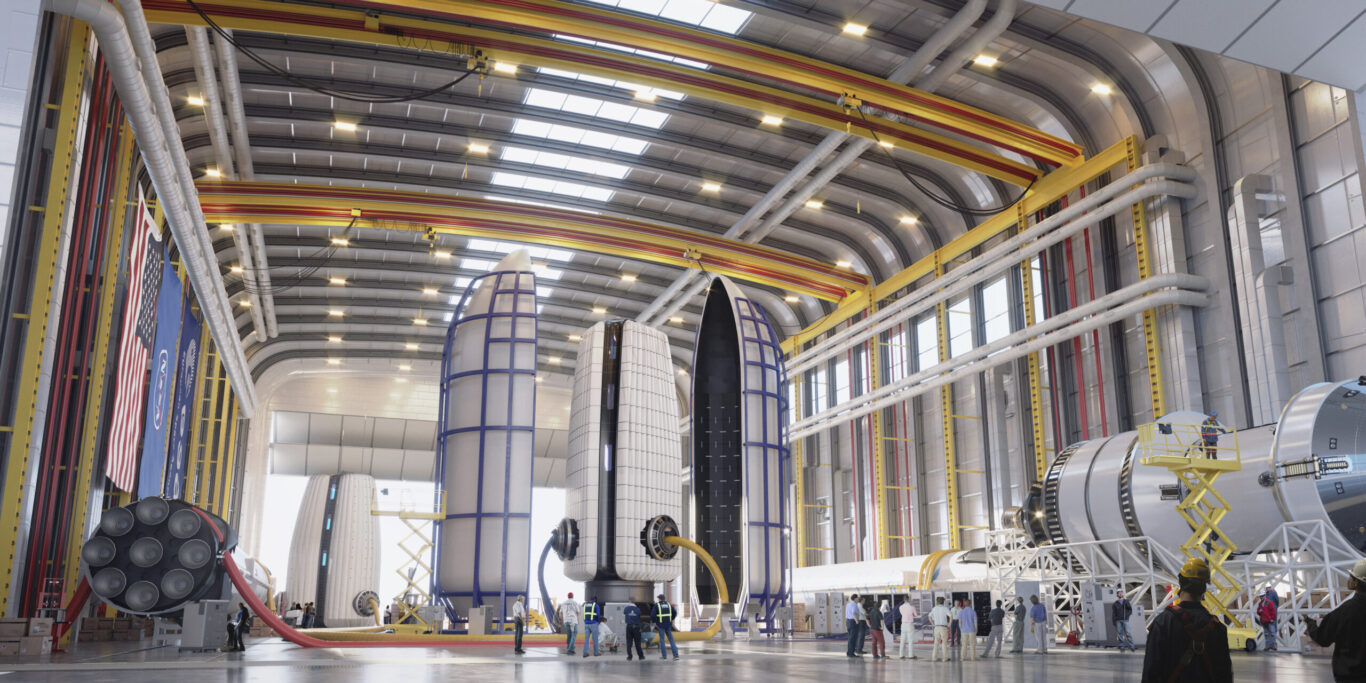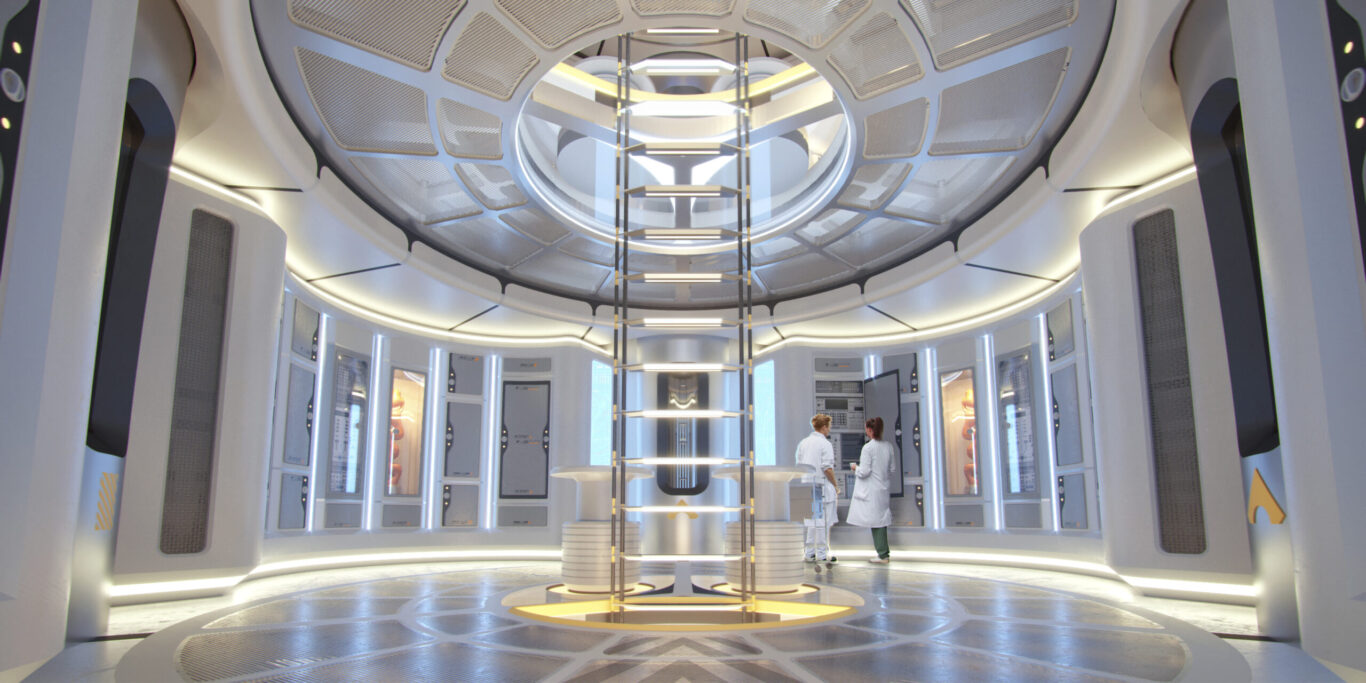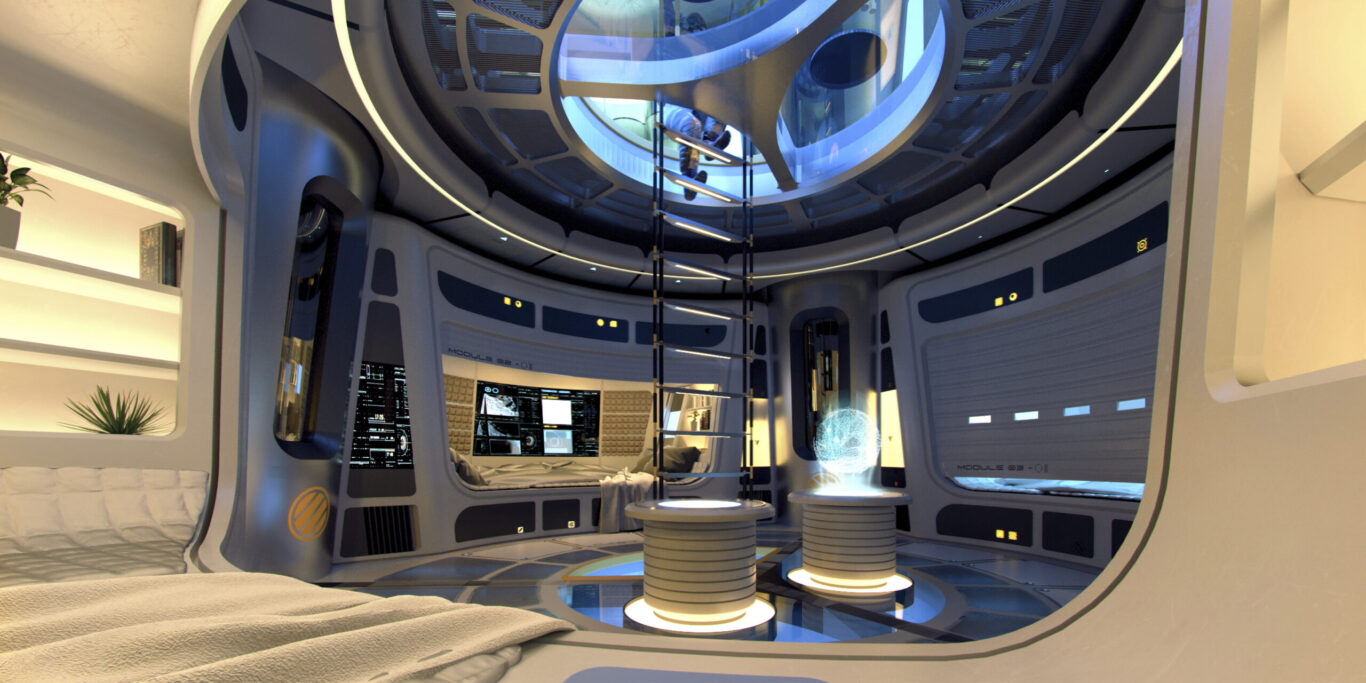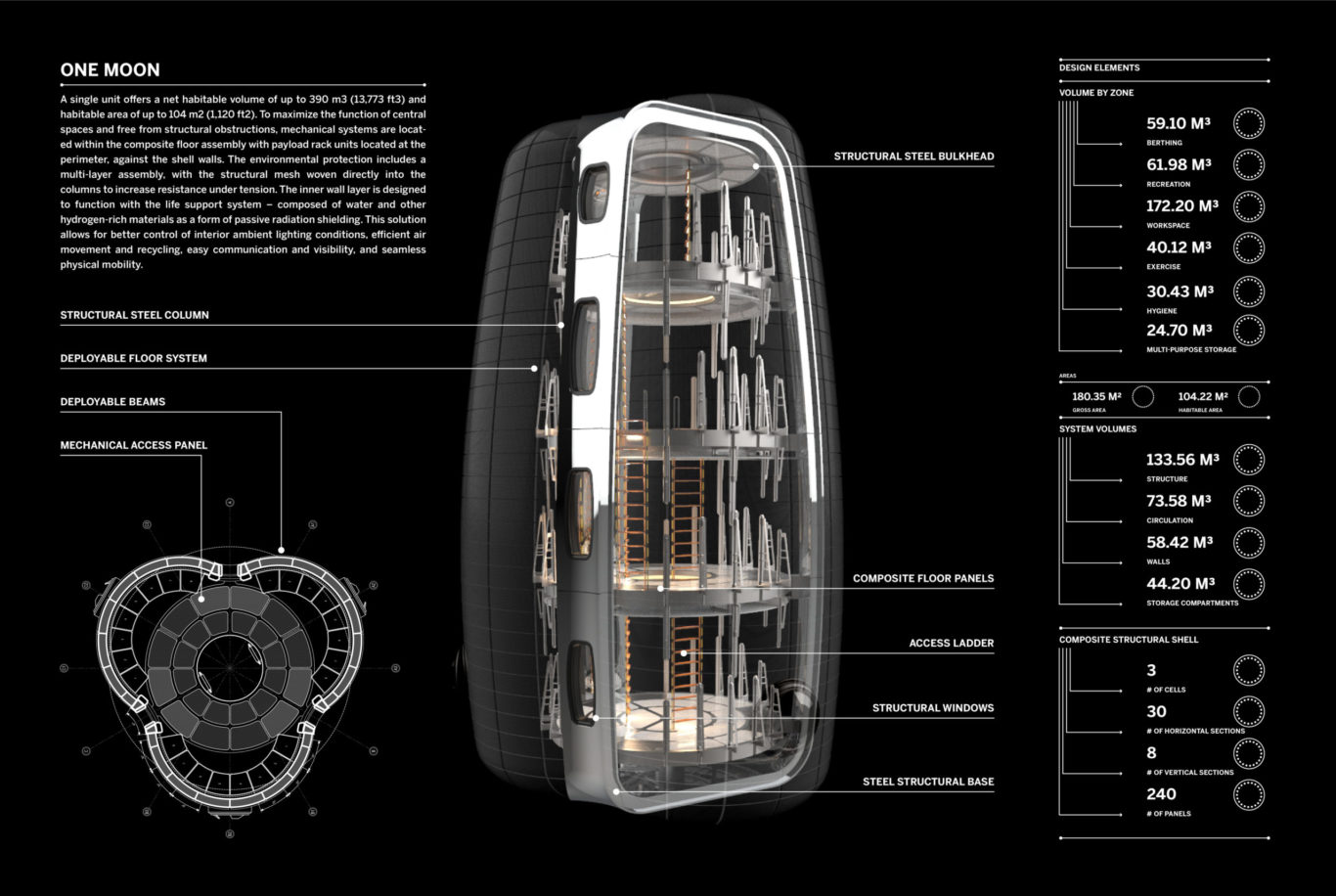A new chapter in space exploration
SOM’s design for a Moon Village advances the European Space Agency’s concept for a lunar settlement built on international and interdisciplinary cooperation. Taking an unconventional approach to design for outer space, SOM and ESA collaborated with faculty at the Massachusetts Institute of Technology on a proposal that combines the expertise of the space industry with knowledge from the realms of architecture, urban planning, science, and psychology to create an environment in which humans will be able to survive and thrive on the Moon.
The design emerges not just from engineering constraints, but from an understanding of how humans experience the spaces they inhabit, and from a commitment to creating an environment conducive to comfortable, long-term habitation. At the same time, the Moon Village project explores new strategies for how humans can coexist and utilize resources — providing knowledge that can also be applied to problems here on Earth.



